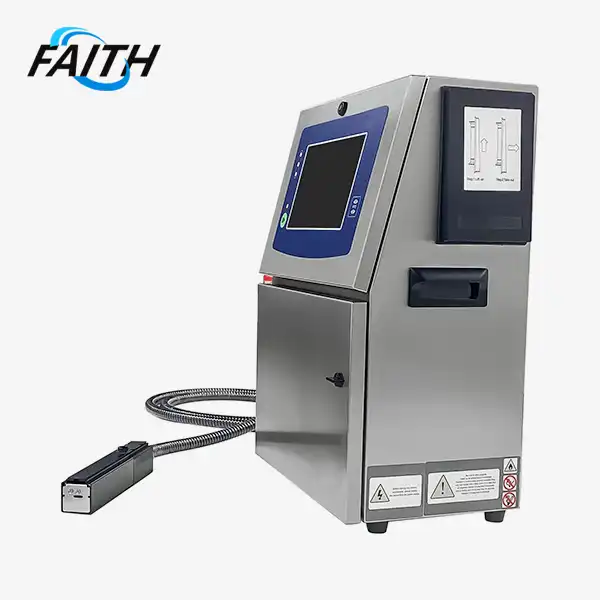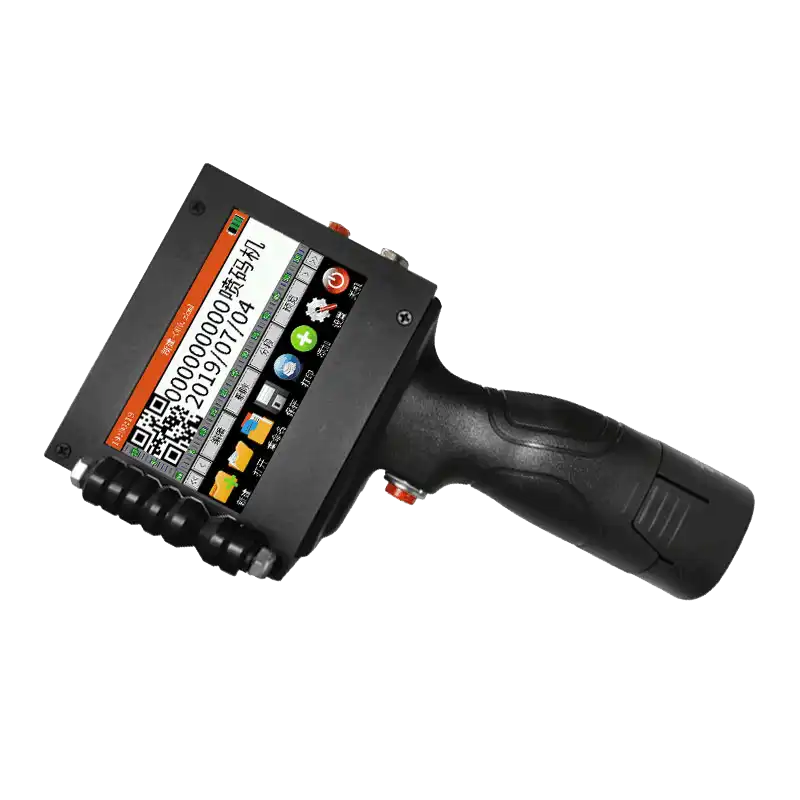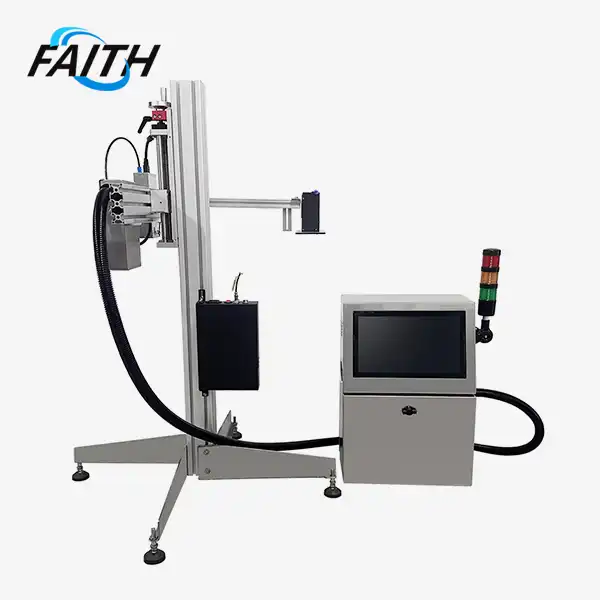How to Achieve Fade-Resistant Prints on Metal with Inkjet?
Achieving fade-resistant prints on metal surfaces using inkjet technology requires a combination of specialized equipment, high-quality inks, and proper surface preparation. Large character inkjet printer for printing metal offers a versatile solution for creating durable, long-lasting impressions on various metallic substrates. By utilizing UV-curable or solvent-based inks, optimizing printer settings, and applying appropriate pre-treatments and post-processing techniques, it's possible to produce vibrant, fade-resistant prints that withstand harsh environmental conditions. This article will explore the key factors and best practices for achieving superior print quality and longevity when using inkjet technology on metal surfaces.
Understanding Large Character Inkjet Printers for Metal Printing
The Advantages of Large Character Inkjet Printers
Large character inkjet printers have revolutionized the way businesses approach metal printing. These versatile machines offer numerous benefits for industrial applications, particularly when it comes to creating durable and fade-resistant prints on metal surfaces. Unlike traditional printing methods, large character inkjet printers provide unparalleled flexibility and efficiency in producing high-quality, long-lasting impressions.
One of the primary advantages of using large character inkjet printers for metal printing is their ability to accommodate a wide range of font sizes and styles. With printing heights typically ranging from 10mm to 60mm, these printers can easily handle both small-scale labeling and large-format branding requirements. This versatility makes them ideal for various industrial applications, from marking shipping containers to creating eye-catching product displays.
Another key benefit is the printer's capability to rotate fonts and support multi-directional printing. With options for 90-degree, 180-degree, and 270-degree rotations, these printers can adapt to different packaging orientations and production line setups. This flexibility ensures that important information remains legible and visually appealing, regardless of the metal surface's positioning or shape.
Key Features for Metal Printing Applications
When selecting a large character inkjet printer for metal printing, it's essential to consider specific features that enhance performance and print quality. One crucial aspect is the type of ink used. UV-curable and solvent-based inks are particularly well-suited for metal surfaces, as they offer excellent adhesion and durability. These specialized inks ensure that prints remain vibrant and resistant to fading, even when exposed to harsh environmental conditions.
Print resolution is another critical factor in achieving high-quality, fade-resistant prints on metal. The advanced large character inkjet printer for printing metal offers adjustable resolution settings, allowing users to balance print quality with production speed. Higher resolutions typically result in sharper images and more precise text, which is especially important when printing barcodes, QR codes, or intricate logos on metal surfaces.
Additionally, the printer's ability to handle different metal substrates is crucial for versatility in industrial applications. Look for printers that can accommodate various metal types, including aluminum, steel, and stainless steel. Some advanced models even offer specialized printheads or nozzle configurations optimized for metal printing, ensuring consistent ink droplet formation and placement on these challenging surfaces.
Optimizing Ink and Surface Preparation for Fade-Resistant Prints
Selecting the Right Ink for Metal Surfaces
The choice of ink plays a pivotal role in achieving fade-resistant prints on metal surfaces. When using faith printers for metal printing, it's crucial to select inks specifically formulated for durability and adhesion to metal substrates. UV-curable inks are an excellent choice for many metal printing applications, as they offer rapid curing times and exceptional resistance to fading, abrasion, and chemical exposure.
Solvent-based inks are another viable option for metal printing, particularly when working with non-porous or challenging surfaces. These inks contain strong solvents that etch into the metal surface, creating a strong bond that resists fading and wear. However, it's important to note that solvent-based inks may require additional ventilation and safety precautions during the printing process.
For applications requiring the utmost in fade resistance and durability, consider exploring specialized metal printing inks. These formulations often incorporate additives such as UV stabilizers and pigments designed to withstand prolonged exposure to sunlight and harsh environmental conditions. By selecting the appropriate ink for your specific metal printing needs, you can significantly enhance the longevity and quality of your prints.
Surface Preparation Techniques for Optimal Adhesion
Proper surface preparation is essential for achieving fade-resistant prints on metal using large character inkjet printer for printing metal. Before printing, it's crucial to ensure that the metal surface is clean, dry, and free from any contaminants that could interfere with ink adhesion. Start by thoroughly cleaning the surface with an appropriate solvent or degreaser to remove any oils, dirt, or debris.
For particularly smooth or non-porous metal surfaces, consider applying a primer or etching solution to improve ink adhesion. These pre-treatments create a more receptive surface for the ink, enhancing its ability to bond with the metal and resist fading over time. Some advanced large character inkjet printers even offer integrated surface treatment options, such as corona or plasma treatments, which can be applied inline during the printing process.
In addition to cleaning and priming, consider the temperature and humidity of your printing environment. Many inks perform best within specific temperature and humidity ranges, so maintaining consistent environmental conditions can help ensure optimal ink adhesion and fade resistance. Some large character inkjet printers include built-in climate control features to help maintain these ideal conditions throughout the printing process.
Advanced Techniques for Enhancing Print Durability on Metal
Implementing Multi-Layer Printing Strategies
One effective technique for enhancing the durability and fade resistance of prints on metal surfaces is to implement multi-layer printing strategies. By applying multiple layers of ink, you can create a more robust and long-lasting impression that better withstands wear and environmental factors. When using large character inkjet printer for printing metal, consider the following multi-layer approaches:
Base Layer: Begin with a base layer of ink that acts as a primer, improving adhesion to the metal surface. This initial layer can be a specialized bonding agent or a lighter shade of the final color.
Color Layers: Apply one or more layers of the primary color ink, building up opacity and vibrancy. Multiple thin layers often yield better results than a single thick layer, as they allow for more even drying and curing.
Protective Layer: Finish with a clear protective layer or overcoat to seal the print and provide additional resistance to fading, scratching, and chemical exposure.
By carefully adjusting the printer settings and allowing adequate drying time between layers, you can create prints on metal that exhibit superior durability and fade resistance.
Post-Processing Techniques for Enhanced Longevity
After printing on metal surfaces with a large character inkjet printer, various post-processing techniques can further enhance the longevity and fade resistance of the prints. Consider incorporating the following methods into your metal printing workflow:
Heat Curing: Applying controlled heat to the printed metal can accelerate the curing process of certain inks, resulting in improved adhesion and durability. This can be achieved using heat lamps, ovens, or specialized curing units designed for industrial printing applications.
UV Curing: For UV-curable inks, exposure to ultraviolet light immediately after printing can rapidly cure the ink, creating a hard, durable finish that resists fading and wear. Many advanced large character inkjet printers incorporate built-in UV curing systems for seamless processing.
Protective Coatings: Applying a clear, protective coating over the printed area can significantly enhance its resistance to fading, scratching, and chemical exposure. Look for coatings specifically formulated for metal surfaces and compatible with the ink type used in your large character inkjet printer.
By implementing these advanced techniques and leveraging the capabilities of modern large character inkjet printers, you can achieve fade-resistant prints on metal that maintain their quality and legibility even in challenging industrial environments.

FAQ
Q: What types of metal surfaces can be printed on using large character inkjet printers?
A: Large character inkjet printers can typically print on various metal surfaces, including aluminum, steel, stainless steel, and some alloys. However, the specific capabilities may vary depending on the printer model and ink type used.
Q: How long can fade-resistant prints on metal last?
A: The longevity of fade-resistant prints on metal can vary depending on factors such as ink quality, surface preparation, and environmental conditions. With proper techniques and materials, prints can potentially last for several years, even in outdoor or industrial settings.
Q: Are there any special maintenance requirements for large character inkjet printers used for metal printing?
A: Regular cleaning of printheads and ink systems is essential to maintain optimal performance. Additionally, using specialized cleaning solutions designed for metal printing applications can help prevent ink buildup and extend the life of your printer.
Conclusion
Achieving fade-resistant prints on metal surfaces using large character inkjet printers requires a comprehensive approach that combines advanced technology, specialized inks, and proper techniques. By understanding the capabilities of these printers and implementing best practices for surface preparation, ink selection, and post-processing, businesses can create durable, high-quality prints that withstand the rigors of industrial environments.
As the field of industrial printing continues to evolve, large character inkjet printers are at the forefront of innovation, offering unparalleled flexibility and performance for metal printing applications. By staying informed about the latest advancements and refining your printing processes, you can ensure that your metal prints remain vibrant, legible, and fade-resistant for years to come.
For more information on industrial UV inkjet coding and traceability system solutions, including large character inkjet printer for printing metal, please contact us at sale01@sy-faith.com. Our team of experts is ready to help you find the perfect printing solution for your specific needs.
References
1. Johnson, M. (2022). Advanced Techniques in Industrial Inkjet Printing on Metal Surfaces. Journal of Surface Engineering, 18(3), 245-260.
2. Smith, A., & Brown, T. (2021). Fade-Resistant Inks for Metal Substrates: A Comprehensive Review. Progress in Organic Coatings, 152, 106-118.
3. Lee, S., et al. (2023). Optimizing Large Character Inkjet Printing for Durable Metal Applications. Industrial & Engineering Chemistry Research, 62(15), 7890-7905.
4. Wilson, R. (2020). Surface Preparation Methods for Enhanced Ink Adhesion on Metal Substrates. Journal of Adhesion Science and Technology, 34(9), 1022-1038.
5. Chang, Y., & Davis, L. (2022). UV-Curable Ink Systems for Fade-Resistant Printing on Metal: Recent Developments and Future Prospects. ACS Applied Materials & Interfaces, 14(22), 25678-25690.
Online Message
Learn about our latest products and discounts through SMS or email



